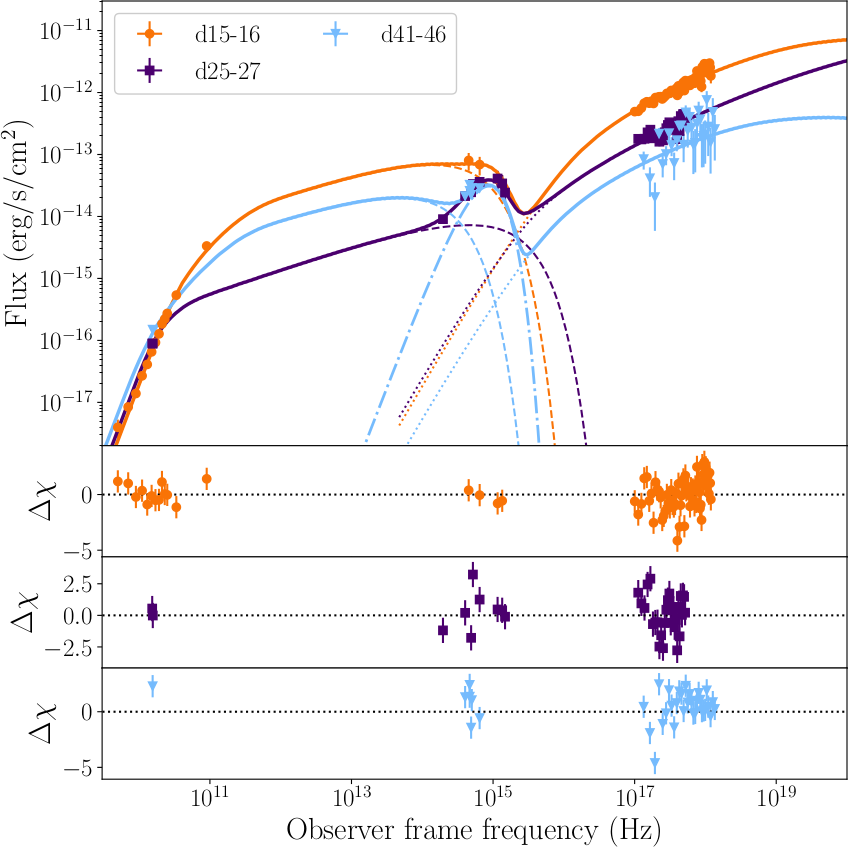NICER / ISS Science Nugget
for December 1, 2022
An exceptional black-hole jet revealed in a multi-wavelength view of a star's destruction
A star that passes too close to a massive black hole will get ripped apart by tidal forces. The resulting stellar debris rains onto the black hole and can trigger the launching of a jet of high-speed particles. In the rarest circumstances, the jet from such a tidal disruption event (TDE) in a distant galaxy points toward Earth, affording us a down-the-barrel view of the properties, contents, and likely formation mechanism of the jet. On 11 February 2022, the ground-based Zwicky Transient Facility (ZTF) optical sky survey detected a cosmic explosion, later dubbed AT2022cmc; prompt NICER observations revealed unexpected brightness in X-rays, suggesting that this was the first "jetted" TDE along our line of sight to be discovered in more than a decade. AT2022cmc was then monitored for several weeks by NICER and more than two dozen other telescopes across the entire electromagnetic spectrum.
Modeling this multi-wavelength dataset, D. Pasham (MIT) and collaborators this week published papers in the prestigious journals Nature Astronomy and Nature in which they report that 1) the newly launched jet was directly pointed at us, 2) its contents moved at > 99.99% the speed of light, and 3) it had an unusually low magnetic field strength. This weak magnetic field is a challenge to our current theoretical understanding of relativistically moving jets, which are thought to require strong magnetic fields to collimate them. Pasham et al. suggest that this jet may instead have been collimated by the radiation pressure provided by a puffed-up inner accretion flow around the black hole. Additionally, at a redshift of 1.2 (some 8.5 billion light years away) AT2022cmc was the farthest such event known to date. The combination of NICER, radio, and optical observations demonstrates that wide-field sky surveys and rapid follow-up can uncover hidden black holes out to the edge of the Universe.

Figure:
The broadband spectrum of the relativistic tidal disruption event AT2022cmc, together with the best-fit jet model. Data (points with error bars) obtained at radio (< 1011 Hz), visible/UV (∽1015 Hz), and X-ray (NICER; 1017-1018 Hz) wavelengths are shown for three different date intervals: 15-16 days (orange), 25-27 days (purple), and 41-46 days (blue) after the explosion. The time-dependent jet model (solid curves) consists of three components: synchrotron emission (dashed), Compton-scattered synchrotron (dotted), and thermal blackbody (dot-dash). Figure from Pasham et al. 2022, Nature Astronomy.
<< Previous
Main Index
Next >>